Last Year Operated:
Section: Goodtimes Square
Manufacturer:
Other Names and Nicknames:
Good Times Square Games
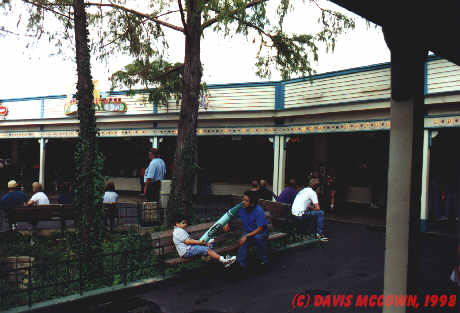
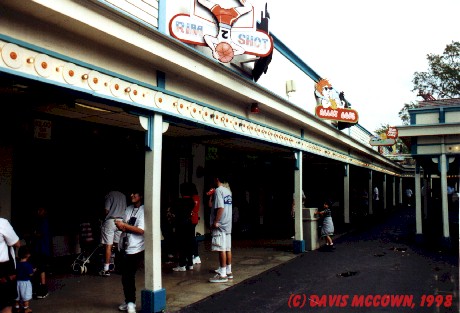
The Unofficial History of Six Flags Over Texas
Good Times Square Games


The Flashback is a boom-a-rang style rollercoaster built by the Vekoma Ride Company of the Netherlands. The boomerang is a standard Vekoma style roller coaster, which are quite popular in amusement parks across the country due to their large number of elements squeezed into a small footprint ride.
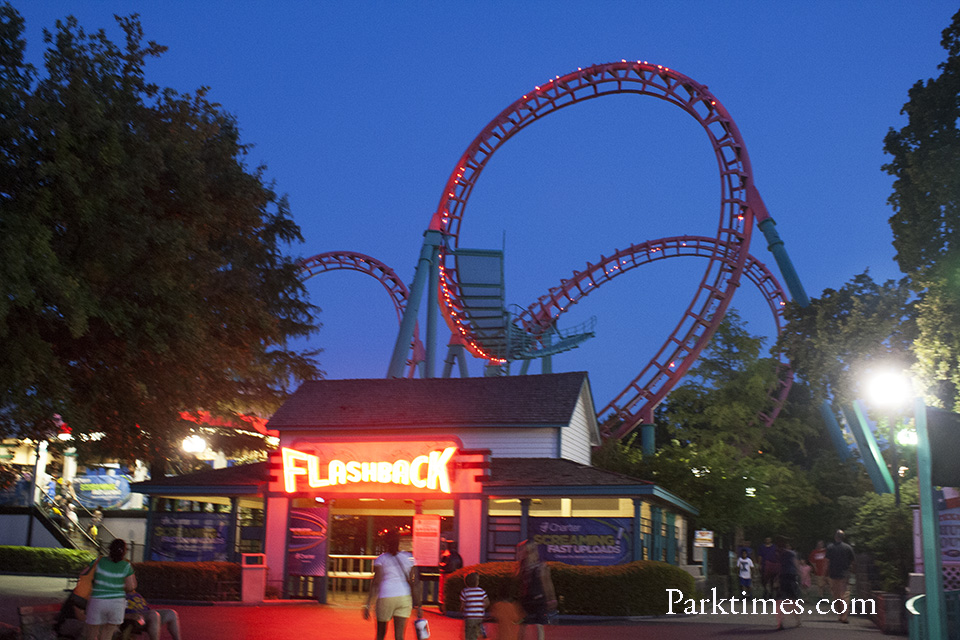
The ride starts with the sole train being pulled backwards out of the stationhouse up a steep one hundred and twenty five foot incline. Once at the top, the train is released, where it travels back through the stationhouse, into a loop, through a roll, into a second loop, through a third loop and up another one hundred and twenty-five foot incline of the same size as the first.
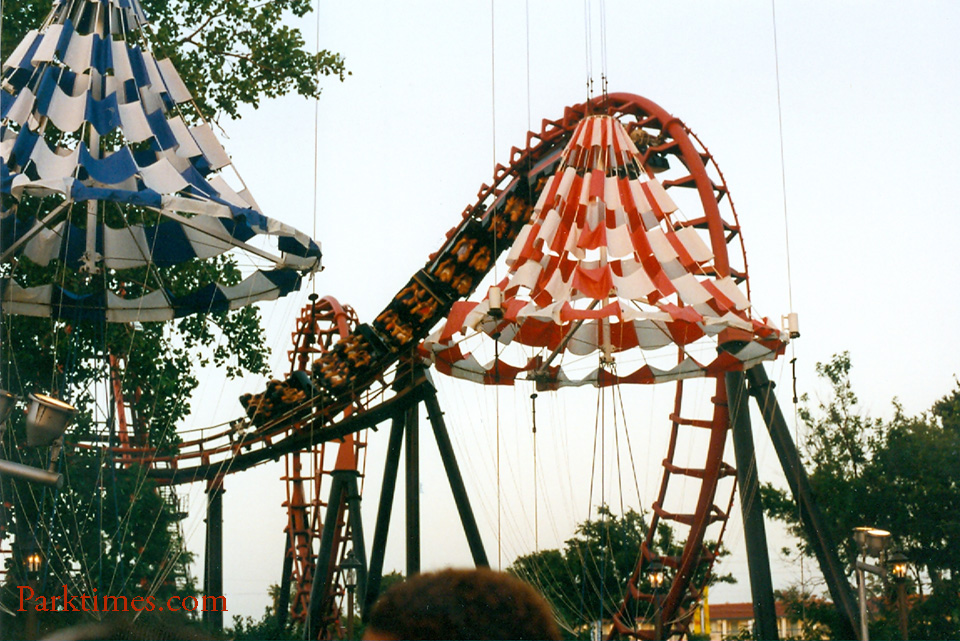
The track is designed so that it brings the track back around to a position next to the original track. The train is then pulled to the top of the second lift and released, where the ride repeats the track, this time with the riders traveling backwards.
The train travels up to 50 mph. The ride turns the riders upside down a total of six times in the one minute, fifty second ride. The single train holds up to 28 riders, with seven four person cars, for a capacity of 750 riders an hour.
The ride was removed at the end of the 2012 season to make room for the Texas SkyScreamer.
For Six Flags twentieth season a traditional wooden roller coaster, the Judge Roy Scream “Awe West of the Pecos”, was installed next to entry Lake on property south of Good Times Square. This property had previously been totally outside of the park proper.
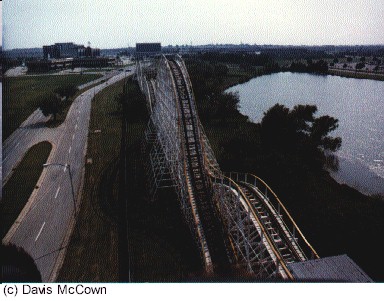
To create the Judge Roy Scream the park hired William “Bill” Cobb, a man who had practically a legend in his own time and his firm William Cobb & Associates.
Since the ride is outside of what had always been the park proper, it is only accessible through a tunnel which travels under the park’s entry driveway. The eight acre ride runs parallel to the large lake located outside the front gate. It was billed as the “biggest addition” in the park’s history.
The ride handles two trains of four cars each, for a total of 24 riders per train. The trains travel up to 53 mph. The ride’s main lift is 65 feet, with a 50 degree, 60 foot drop. The trains travel a total of 2500 feet of track in approximately two minutes. The ride is designed to handle 1,200 passengers an hour.
For a time in 1994, some variety was created by turning the trains around, allowing the riders to ride backwards as they traveled around the track.
While not as large as its sister “scream” coasters at Georgia and Mid-America, the Judge Roy Scream is highly popular and brought the park’s operating coaster count to five.
America’s Bicentennial year was a year of major celebration throughout the Country. It was also the year that Six Flags celebrated its 15th anniversary. New for the Bicentennial year was the “Texas Chute Out”, the world’s first “modern” parachute drop ride. The ride was built by Intamin AG, in Berne, Switzerland, at a cost of $1.5 million.
The ride was located to the east of the Good Times Theater. The 200 foot tall tube structure had twelve forty foot arms extending from the top of the structure in an 85 foot diameter. Cables on each arm pulled a small bench seat up to 175 feet above the ground. The ride then stoped for a brief moment, long enough to give the rider a bird eye’s view of the surrounding areas. The ride then released the bench, allowing the ride to follow free fall thirty-five feet towards the ground below.
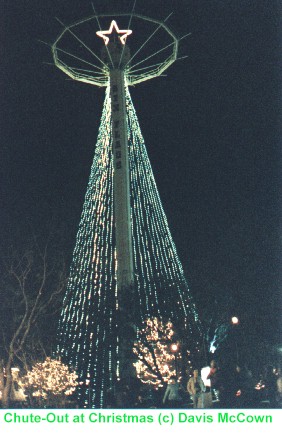
In seconds, however, the ride’s thirteen and a half foot diameter parachute engages above the rider, allowing the rider to “float” down another one hundred and forty feet to the surface. The ride was driven by twelve motors and winches located at the top of the ride. These controlled the 2 and ½ miles of steel cable used by the ride. Access to the motors was through a two man elevator located inside the eight foot tube structure. Each ride lasted 28 seconds.
The design capacity for the ride was 1,500 riders per hour. Two to three rides could ride at a time. Built by Intamin AG, the ride was known as the “first modern” parachute ride due to the fact that it was based on similar earlier rides. The most famous of the earlier rides include one built for the 1939 New York’s World’s Fair and moved to Coney Island in 1941, where it operated until 1968.
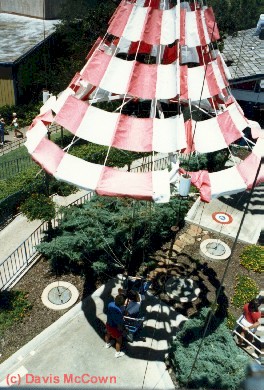
A similar ride, the Great Gasp was constructed at Six Flags Over Georgia in 1976. It closed and was demolished in 2005. A third sister ride, the, Sky Chuter opened at Six Flags Over Mid-America in 1978 and closed a mere four years later, in 1982.
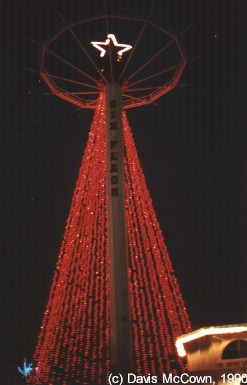
The Texas Chute-out operated for thirty-seven seasons. It was closed in 2012. It operated in the park for more seasons than any other ride which has been removed.
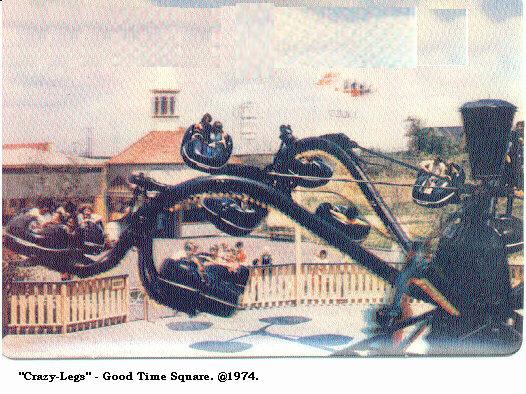
The Rotoriculous was built at the back of Good Times Square between the Bumper Cars and the Crazy Legs. The Rodoriculous was designed from a typical “Himalaya” style ride, with a chain of seats strung together to form a circle around the edge of the ride.
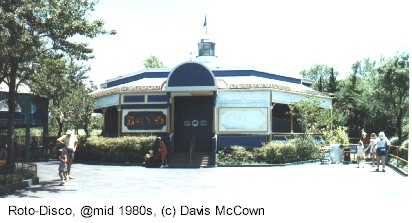
The Rotoriculous differed from other “Himalaya” style rides, however, in that it was completely indoors. It was housed in a small building with just enough room for the ride and control station. In addition to the ride, the room was equipped with special audio and visual effects, including the symbol of the seventies, a large disco mirror ball.
As the ride started, the cars moved up and down and they circled the track. As the ride slowly started forward, a recorded narration began, telling the story of the invention (the ride) and its intended purpose.
Within a few moments, however, the narrator announced that something had gone wrong, as which time the ride began to rotate backwards at much greater speed. Simultaneously with the ride changing directions, the sound became more chaotic, random slides were flashed at high speeds on the sides of the building, and other flashing lights went off.
Eventually, things were brought back to “normal”, the ride slowed down and the bizarre lights and sounds terminated. As the years past, the narrator was removed and the slides and lights became more random. Eventually, the ride was renamed the Roto-disco and the disco ball became the centerpiece effect.